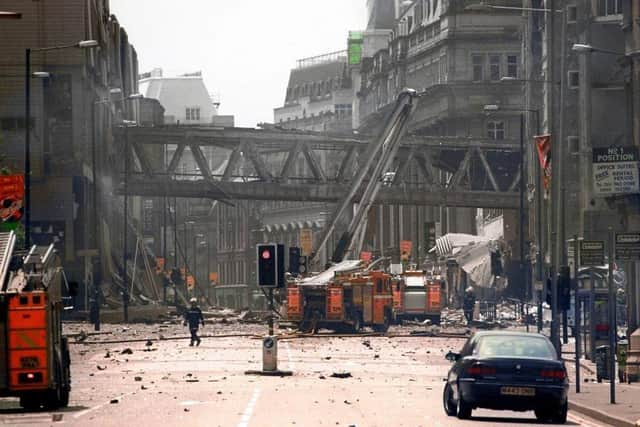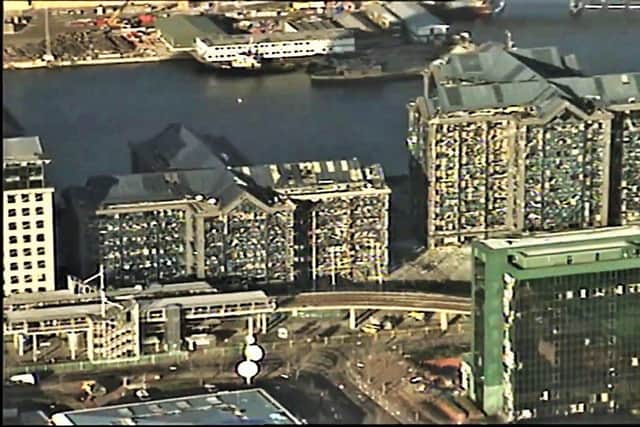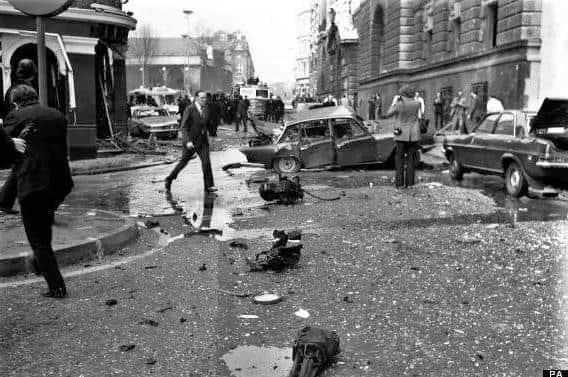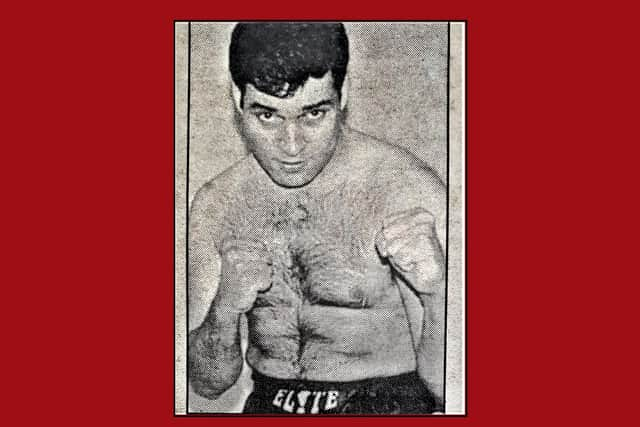Civil lawsuit against Gerry Adams over IRA allegations: ‘This isn’t about the money - it’s about closure’
and live on Freeview channel 276
Jonathan Ganesh made the comments as news broke yesterday that he and two other men who were also wounded in IRA explosions are mounting a civil case against the former Sinn Fein president, arguing that he bears responsibility for the blasts.
Mr Adams has always denied being a member of the IRA, and has never been convicted of involvement in IRA violence.
Advertisement
Hide AdAdvertisement
Hide AdHowever, he has also declared (in 2019) that “I have never disassociated myself from the IRA and I never will until the day I die”.


Now in his 70s, Mr Adams retired as Sinn Fein president in 2018 after 35 years in the role. He stood down as TD for Louth two years later, effectively ending his frontline political career.
The London law firm McCue Jury and Partners said yesterday that “a High Court civil action has been launched by victims of Provisional IRA terrorism against Gerry Adams”.
It said that “the claimants intend to demonstrate his leadership of PIRA and responsibility for its mainland bombing campaign, which was waged for over 20 years from 1973 to 1996”.
Advertisement
Hide AdAdvertisement
Hide AdA statement from the law firm reads: “Not only has Adams always denied any responsibility for PIRA’s terrorist campaign, he has also repeatedly denied ever even being a member of PIRA.


“This is despite many eyewitnesses coming forward to allege that, for decades, PIRA was under Adam’s leadership.
“If true, then Adams may be responsible for over 1,300 terrorist murders. Yet, there still has never been a proper inquiry into his alleged role in the Troubles.
“The action is not for compensation but has been brought to compel Adams through a legal process to give a full and honest account of his role in the Northern Ireland Troubles.
Advertisement
Hide AdAdvertisement
Hide Ad“Should he refuse then it will be for the court to adjudicate on his part.


“At a time when the UK government is introducing legislation that will prevent any future legal actions associated with the Troubles, this may be the last chance to compel Adams to engage in an effective truth and reconciliation process to ensure a lasting peace in Northern Ireland and to give, finally, PIRA’s victims some deserved closure.”
They said that whilst IRA victims have watched former paramilitaries gain political high office, they themselves “have been denied justice, ignored, and forgotten”.
‘IF HE WASN’T IN THE IRA... WHY?’
Mr Ganesh was caught up in the 1996 Canary Wharf bombing.


Speaking to the News Letter yesterday, Mr Ganesh said the other plaintiffs are in their 80s and have failing health, so “this might be the only opportunity they have to bring some closure”.
Advertisement
Hide AdAdvertisement
Hide Ad“Mr Adams should not be allowed to walk into the ether,” he said.
“He has to explain himself. Obviously he was a leader of Sinn Fein ... We need some accountability.
“We’re hoping from this legal action we’re bringing that it’ll give Mr Adams the opportunity to explain himself and to answer our allegations against him.”
He added that it could turn out Mr Adams “might’ve had nothing to do with the Troubles whatsoever” but “obviously from our point of view there’s some multiple questions, as well as evidence from people who confirmed they were in the IRA who allege he was definitely in the IRA”.
Advertisement
Hide AdAdvertisement
Hide AdHe said another question worth posing to Mr Adams is this: “If you weren’t in the IRA, why were you not in the IRA?


“Because you seem so interested in it, you seem so supportive of it.”
He also stressed the plaintiffs are not seeking financial reward, and were seeking the token amount of £1.
The Daily Mail reported yesterday that Mr Adams was served with papers last week.
Advertisement
Hide AdAdvertisement
Hide AdIt quoted an unnamed spokesman as saying: “Mr Adams rejects the claims made in the notice of legal action. His solicitor will deal with it.”
Yesterday the News Letter asked if Sinn Fein or Mr Adams wished to offer a fuller response to the civil suit, or reply to Mr Ganesh’s remarks.
No response was received at time of writing.
TWO CAREERS CLOSED OFF:
Jonathan Ganesh’s own story is an unusual one.
His father is Sri Lankan, and his mother (whose maiden name was Coll) is Irish.
Through her, he is related to Eamon DeValera, whom he believes was his great, great, great uncle.
Advertisement
Hide AdAdvertisement
Hide AdHe grew up in Limerick but later moved to London, and has dual Irish/UK citizenship.
He took up boxing, fighting in clubs including Broad Street ABC in the Shadwell area of the east end, and told the News Letter that at one stage he had been a London area schoolboy champion.
He aimed to turn pro, and also had ambitions to be a solicitor.
But the 1996 bomb closed these avenues to him, both due to physical injuries and PTSD.
Advertisement
Hide AdAdvertisement
Hide AdHe did go on to earn a law diploma from the Open University, but says he would struggle to practise.
Now 47, he volunteers with the Docklands Victims’ Association and runs counselling workshops for people with PTSD.
Asked to describe the effects of the bomb, he said: “It’s not always easy. But I will say this to you: after the bomb, it certainly changed my life, mainly from the loss of my friends.
“It’s changed my life dramatically. I’m not what I was. But I try to do the best I possibly can.
Advertisement
Hide AdAdvertisement
Hide Ad“I’d say it’s embedded in my mind. It’s not always there, but if I hear a loud bang, or thunder and lightning, or hear something strange.
“It brings it back to me immediately. It brings that fear back. Imagine: you think you’re gonna die.”
The other claimants bringing the extraordinary legal case against Mr Adams are Barry Laycock (a victim of the IRA’s 1996 Manchester bomb) and John Clark (a victim of the 1973 Old Bailey bombing).
Here is a short summary of the attacks which lie at the heart of this nascent lawsuit (with thanks to the Ulster University’s CAIN project):
LONDON 1973:
Advertisement
Hide AdAdvertisement
Hide AdOn March 8, 1973, a referendum was held on whether or not Northern Ireland should remain part of the UK.
The turnout was only 57 %, given that there was a Catholic/nationalist/republican boycott of the poll (leading to a 98% pro-Union outcome).
At 2.44pm a bomb blew up at Scotland Yard, followed six minutes later by another bomb at the Old Bailey courthouse.
Another two car bombs were found in central London, but were defused.
Advertisement
Hide AdAdvertisement
Hide AdWell over 200 people were injured in the two blasts; at the Old Bailey, Mr Clark was among the wounded, and a civilian called Frederick Milton, 58, died from a heart problem following the explosion.
The lawyers for the trio taking the case against Adams said Mr Clark and Mr Laycock “are hesitant to talk as they still suffer from severe stress related to the atrocities they were caught up in”.
Among those IRA members convicted in relation to the blast was Gerry Kelly, now MLA for North Belfast.
LONDON 1996:
On February 9, 1996, the IRA released this statement, signed by ‘P O’Neill’: “It is with great reluctance that the leadership of the IRA announces that the complete cessation of military operations will end at 6pm on February 9 ...
Advertisement
Hide AdAdvertisement
Hide Ad“Instead of embracing the peace process, the British government acted in bad faith with Mr Major and the Unionist leaders squandering this unprecedented opportunity to resolve the conflict.
“Time and again, over the last 18 months, selfish party political and sectional interests in the London parliament have been placed before the rights of the people of Ireland.”
It ended by demanding “an inclusive negotiated settlement” and claiming that “the blame for the failure thus far of the Irish peace process lies squarely with John Major and his government”.
About an hour later a lorry filled with explosives blew up Canary Wharf, London’s new corporate district on the Isle of Dogs (its massive Canada Square skyscraper had been completed in 1991).
Advertisement
Hide AdAdvertisement
Hide AdIt killed civilians Inan Ul-Haq Bashir, 29, and John Jefferies, 31, and injured countless others – including Mr Ganesh.
MANCHESTER:
On June 15, 1996, an IRA bomb destroyed much of Manchester city centre and injured 200 people.
The Manchester Evening News reported: “Just before 9.20am, the streets had already begun filling up with crowds when two men in hooded anoraks and sunglasses left a heavily loaded Ford Cargo van outside M&S ... “It was parked on double yellow lines with its hazard lights flashing. It contained 3,300lbs of homemade explosive, three times the size of the Canary Wharf bomb.
“They walked away, ringing an IRA chief in Ireland to let them know the job was done.
Advertisement
Hide AdAdvertisement
Hide Ad“The pair escaped in a burgundy Ford Granada, later abandoned in Preston.
“Three minutes after the van was abandoned, a traffic warden slapped a ticket on it.”
Some time after 9.38am warning calls were placed.
“Then began one of the most extraordinary policing operations the country has ever seen: the evacuation of 80,000 people,” the paper adds.
At 11.17am, the bomb exploded, and the blast could be heard from 15 miles away. Incredibly, no-one was killed.
MORE FROM THIS REPORTER:
Advertisement
Hide AdAdvertisement
Hide Ad